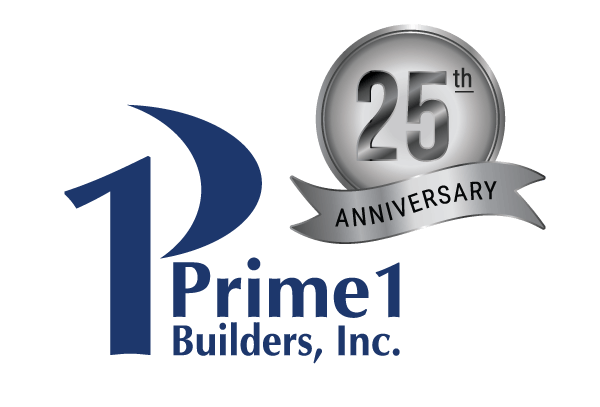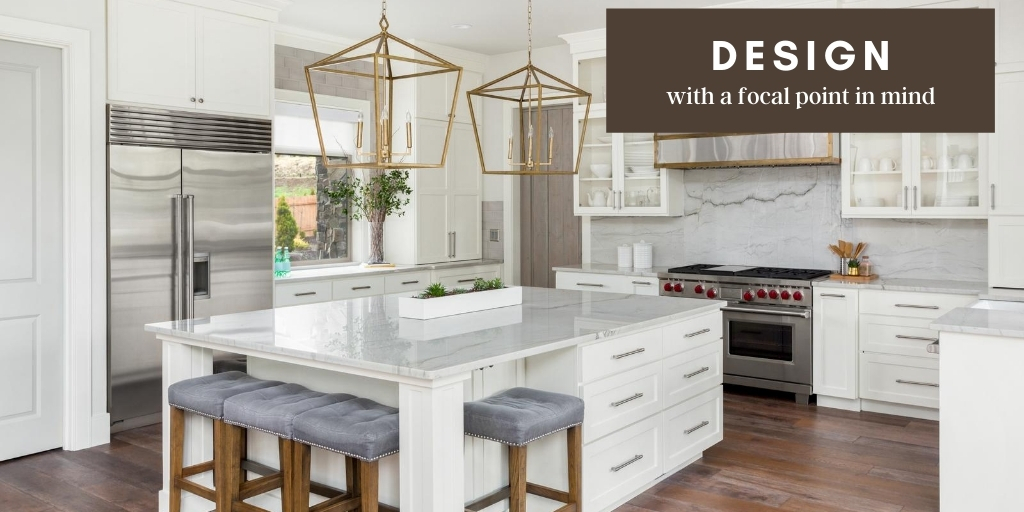Any designs you create cease to exist without a definitive “focal point.”
But what is a focal point, and why is it so important in design functions? Based on the Gestalt principle, a focal point or emphasis works as the star of the room. It captures the attention of the viewer and accentuates the surroundings.
The use of “focal points” is common across all fields of design, including architecture, interiors, fashion apparel, digital transformation and even in paintings. Although overtly used, focal points are inexplicable for layman’s eye or perception. We, as humans, tend to see a picture in its unified form, where similar patterns and elements are grouped together.
Typically, natural focal points in interior design include windows, doors and fireplaces. But what if your room doesn’t have one? Look at the space as an empty canvas, and create your own focal points by:
- Accentuating one of the walls
- Adding artwork
- Including showstopper furniture piece
- Using backsplashes in your kitchen
How to Create a Focal Point in Your Room
Creating a focal point doesn’t imply decorating each nook and corner of the room but needs concentration on a single feature to grab attention. Here are some tips for creating a focal point in any living space:
Emphasize the Interiors
Stay budget-friendly by using the already existing elements, such as walls, windows and doors, to create a focal point. Some common ideas are to drape windows, accentuate it with bold artifacts, or texture the walls and ornate them with wall frames and hangings.
Custom-Design Room Décor
If you find natural focal points boring, then create your own with movable, custom-made structures. Look for a patterned partition, false ceiling or an eye-catching centerpiece to create an alluring point of focus.
Reinvent Your Lighting Set-Up
For extra attention, reset your lighting system, but keep the colors and patterns to a minimum. You can even re-establish the aura of your room with proper lighting that also enhances the interior.
Creating a Focal Point in Minimalistic Bathroom
When you first enter your bathroom, it shouldn’t be the mess on the sink that catches your attention. It should be of the design elements. For most of us, the aesthetics of the bathroom are as important as any other room; thus, we believe in creating masterpieces.
Tiled or Textured Walls
Tiles add architectural interest by giving character and depth to your bathroom. You can find a variety of options today, including different textures, materials and appearance. You can be as creative as you want to be.
Trendy Vanity
A bathroom vanity is one of the most purposeful spaces in the bathroom. It’s easy storage for bathroom essentials. But with the right design, it can add visual appeal. However, using vanity as a focal point requires careful planning so that other elements, such as tapware and benchtop, must complement it.
Standalone Bathtubs
A freestanding bathtub can be a head-turner element in your bathroom if you amplify it with the right décor. When using standalone bathtubs, leave ample space around for easy cleaning and maintenance.
Funky Mirrors
Bold, tall mirrors are the latest fads in the bathroom interiors. Accentuate them with funky frames and warm lights for a style statement. However, consider its width, height and proportions when using it as the centerpiece for attraction.
Creating a Focal Point in Modernistic Kitchens
Do you check out the latest kitchen interiors in lifestyle magazines and feel inspired and depressed at the same time?
Watching DIY renovation shows augments your search for home improvement. Here, we have ideas to establish eye-catching, head-turning focal points in your kitchen.
Contrasting Colors
Use bold splashes of colors, such as bright red and yellow hues. Did you know colors have dramatic effects on hunger? So why not accessorize your kitchen with bright colors and make it a homey spot for reunions at dinnertimes when the whole family enjoys a hearty meal?
Wall Décor
They can be crazy and expensive, but you can make it budget-friendly, with monochromatic paint accentuated with a vibrant wall hanging or maybe spoon-holders. Such a setup works well in minimalistic designs where a single element works as a focal point.
Upgrade Pantry
Your pantry is storage for your kitchen essentials, but in modernistic designing, well-organized pantries and cabinets can create visual interests. Showing off the contents of your storage space creates an illusion of a wider and bigger kitchen.
Can You Have More than One Focal Point in a Single Living Space?
The idea of having a singular focal point is a myth. Our living spaces have multiple features and functions that can accentuate the overall look. Thus, having multiple focal points in a single room makes sense.
Stacking all elements on a single wall or corner will create a lopsided image; therefore, you should evenly distribute the focal points for a balanced design. Have you ever heard of the Rule of Three?
Although there is no restriction on the number of focal points that a room can have, stick to three when feeling less confident with your interior design skills. But if it’s a small room, two focal points are your safest bet.
When having multiple focal points, set one to be the most dominant to establish a sense of visual structure. A logical flow in your design declutters the space and creates harmony while adding a dramatic look with multiple accentuated focal points. Typically, a dominant focal point is one that you see first as you enter the space—it could be a wall, window, fireplace or even the furniture.
Finding a focal point is highly important to prevent a chaotic look. Our tips will guide you in finding and designing an attention-grabbing point of focus that will stand out from other elements and functions of the room.
Are you ready to remodel? If you’d like to discuss how we can help you create a beautiful kitchen or master bath, contact us.

